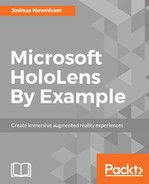Let's begin by first defining and contrasting three similar, but frequently misused, paradigms: VR, AR, and MR:
- VR describes technology and experiences where the user is fully immersed in a virtual environment.
- AR can be described as technology and techniques used to superimpose digital content onto the real world.
- MR can be considered as a blend of VR and AR. It uses the physical environment to add realism to holograms, which may or may not have any physical reference point (as AR does).
The differences between VR, AR, and MR are not so much in the technology but in the experience you are trying to create. Let's illustrate it through an example--imagine that you were given a brief to help manage children's anxiety when requiring hospital treatment.
With VR, you might create a story or game in space, with likeable characters that represent the staff of the hospital in role and character, but in a more interesting and engaging form. This experience will gently introduce the patient to the concepts, procedures, and routines required. On the other end of the spectrum, you can use augmented reality to deliver fun facts based on contextual triggers, for example, the child might glance (with their phone or glasses) at the medicine packaging to discover what famous people had their condition. MR, as the name suggests, mixes both the approaches--our solution can involve a friend, such as a teddy, for the child to converse with, expressing their concerns and fears. Their friend will accompany them at home and in the hospital, being contextually sensitive and respond appropriately.
As highlighted through these hypothetical examples, they are not mutually exclusive but adjust the degree to which they preserve reality; this spectrum is termed as the reality–virtuality continuum, coined by Paul Milgram in his paper Augmented Reality: A class of displays on the reality-virtuality continuum, 2007. He illustrated it graphically, showing the spectrum of reality between the extremes of real and virtual, showing how MR encompasses both AR and augmented virtuality (AV). The following is a figure by Paul Milgram and Fumio Kishino that defined the concept of Milgram’s reality-virtuality continuum and illustrates the concept--to the far left, you have reality and at the opposite end, the far right, you have virtuality--as MR strides itself between these two paradigms:

Our focus in this book, and the proposition of HoloLens, is MR (also referred to as Holographic). Next, we will look into the principles and building blocks that make up MR experiences.
